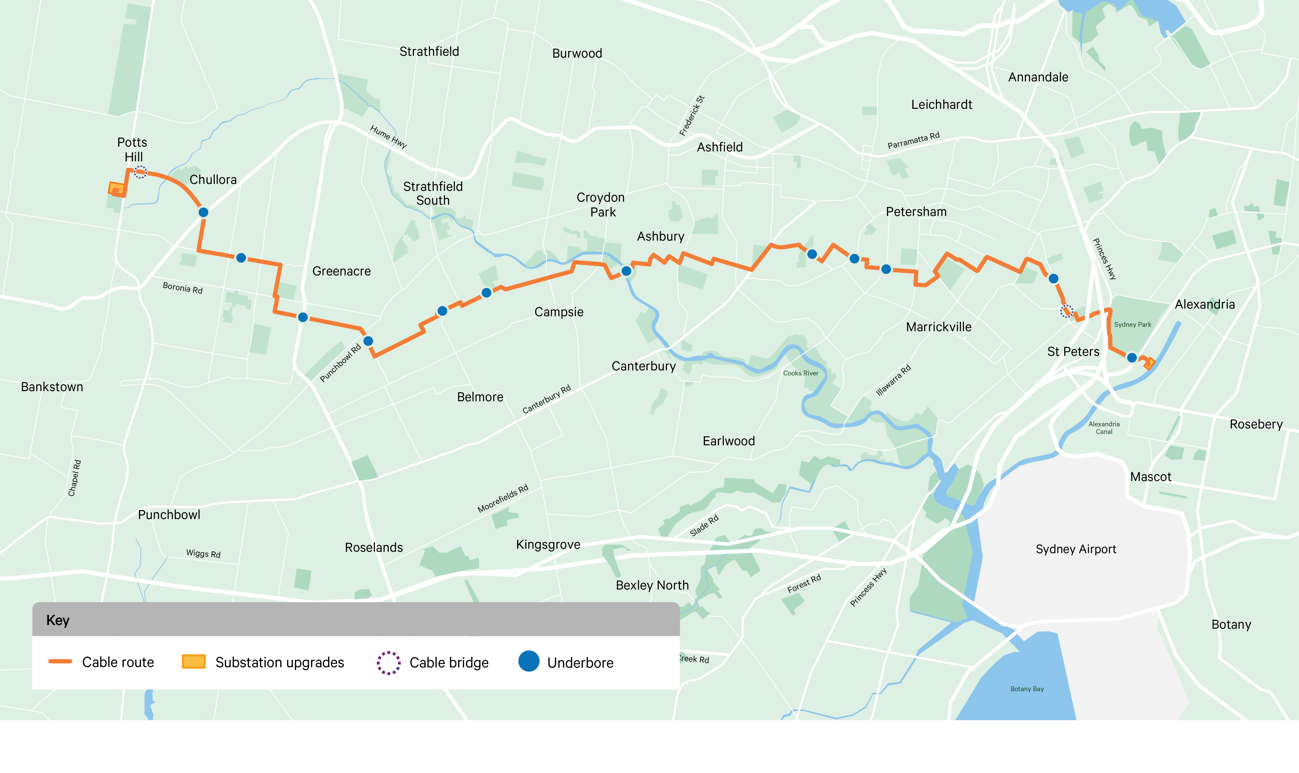Overview
The Powering Sydney’s Future project has secured electricity supply to the Sydney CBD and surrounding areas for decades to come.
The project was fast tracked by the NSW Government in response to growing peak electricity demand, driven largely by the new infrastructure investment and population growth.
The $235 million project, the largest 330kV cable project delivered in Australia, ensures a reliable electricity supply to more than 800,000 residents and the critical businesses and infrastructure helping to power the nation’s largest economy.
Construction works
Construction of the project by Transgrid Group’s delivery partners Garde and Taihan, Zinfra and GE included:
- Installing a new 20km, 330kV underground cable between Potts Hill and Alexandria
- Upgrading Transgrid Group’s substations at Potts Hill, Alexandria and Picnic Point
- Installing additional conduits so there is space for a second cable to be added in the future as demand increases
- Constructing cable bridges for the cable to cross rail corridors.
Construction of the project was completed on time and on budget despite challenges associated with the COVID-19 pandemic and building infrastructure in some of the most densely populated areas in Australia.
Works commenced in August 2020, with main construction completed in July 2022 and road restoration works finished in June 2023.
Community benefits
Transgrid Group collaborated with Transport for NSW to deliver the Bedwin Road Cycleway Bridge, which provides a route for cyclists over the rail line at St Peters and carries the Powering Sydney’s Future cables.
We also worked to provide meaningful support to local businesses directly impacted by construction by engaging Realise Business to implement a strategy to help businesses ride out building works with minimal disruption.
During construction, Transgrid Group also provided $190,000 in grants to support the work of local not-for-profit groups along the project route under our Community Partnerships Program.



